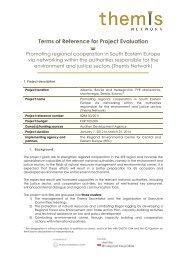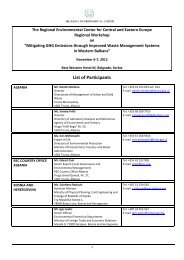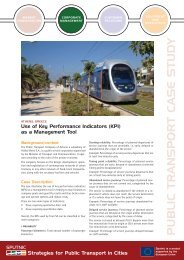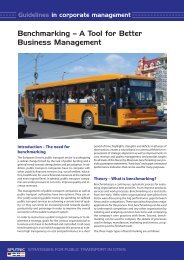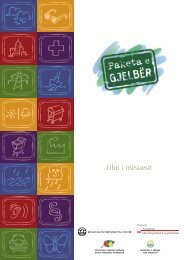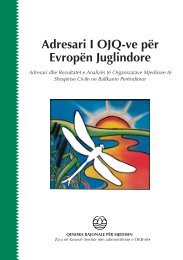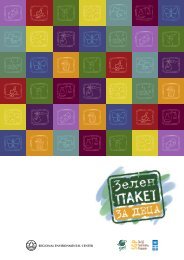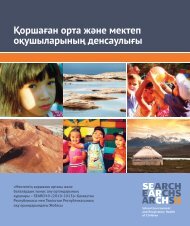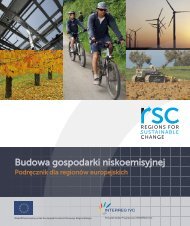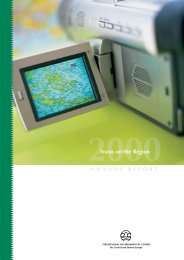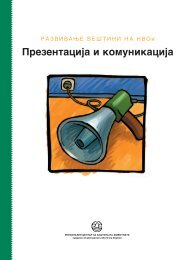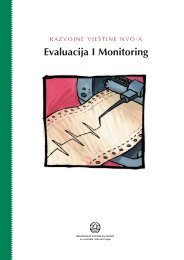POLAND - The Regional Environmental Center for Central and ...
POLAND - The Regional Environmental Center for Central and ...
POLAND - The Regional Environmental Center for Central and ...
You also want an ePaper? Increase the reach of your titles
YUMPU automatically turns print PDFs into web optimized ePapers that Google loves.
NUTRIENT REDUCTION / BEST MANAGEMENT PRACTICE<strong>POLAND</strong>Rural <strong>Environmental</strong> Protection ProjectProject Summary <strong>and</strong> Scope<strong>The</strong> Baltic Sea Strategic Action Plan estimates that 30 to 40 percent of the nitrogen <strong>and</strong> 10 percentof the phosphorous entering the sea come from agriculture, <strong>and</strong> the eutrophic conditions theycause is the top priority transboundary water challenge. <strong>The</strong> Rural <strong>Environmental</strong> ProtectionProject <strong>for</strong> Pol<strong>and</strong> aimed to significantly increase the prevalence of environmentally responsiblepractices among eligible farms to reduce nutrient discharges.<strong>The</strong> project had two main components:● farm environmental improvements facilitated by specially trained agri-environmental advisorswho will work with eligible farmers to develop farm-management plans to reduce non-pointsource pollution, including options <strong>for</strong> cropping, tilling, manure spreading, fertiliser applicationpractices, <strong>and</strong> constructed wetl<strong>and</strong>s, as well as investments such as manure storage facilities,buffer strips, etc; <strong>and</strong>● public awareness programmes, project monitoring <strong>and</strong> management <strong>and</strong> a replication strategy.INVESTMENTGlobal EnvironmentFundUSD 3 millionWorld Bank loan USD 2 millionCountry co-financing USD 3.5 millionEuropean Unionco-financingUSD 2 millionNordic EnvironmentFinance CorpUSD 1 millionTotalUSD 14.4 millionPROJECT DURATION1999 to 2004NUTRIENT CHALLENGES● ● Excess nutrients from agriculturecausing eutrophic conditions in theBaltic SeaEARLY NUTRIENT BMP “WINS”● Provision of agri-environmentadvisors● Promotion of good pracices incropping, tilling, manure h<strong>and</strong>ling<strong>and</strong> fertiliser application● <strong>The</strong> use of constructed wetl<strong>and</strong>sBest Practices<strong>The</strong> project utilised a wide range of BAPs (manure h<strong>and</strong>ling, tillage, etc.) <strong>and</strong> worked with smallfarmers to identify the following practices:●●●●●Improvement of extension services in Pol<strong>and</strong> to advise farmers <strong>and</strong> help propagate thesuccesses of the project beyond local pilot demonstrations. However, it was recognised thatmore ef<strong>for</strong>t had to be directed towards the Ministry to raise interest in the benefits <strong>and</strong>importance of the extension/advisory services.Privately managed advisory firms are more effective than state organisations.Convincing farmers about the necessity of certain technological solutions by displaying ademonstration farm on the local scale.Encouraging farmers to gather in groups to lower costs through joint tender procedures.Gathering farmers into groups of producers <strong>and</strong> equipment users is financially advantageous.
NUTRIENT REDUCTION / BEST MANAGEMENT PRACTICEKey BMP Indicators●●●Manure tanks <strong>and</strong> manure pads were useful in showing farmers how much of their manure hadpreviously been wasted (a valuable source of nutrients) resulting in pollution. Training <strong>and</strong> theuse of agricultural advisory services, planting of buffer strips (500,000 trees/shrubs planted),publicity material <strong>for</strong> farmers, 25 monitoring sites to quantify benefits (in the longer term of 5-10 years)28,000 family farms involved, 952 manure tanks constructed, <strong>and</strong> 655 manure pads built.Nutrient management plans were introduced on 893 farms covering 23,295 hectares with anestimated nutrient reduction of 800 tonnes/yearSeventy-three percent of farmers participating saw the benefits <strong>and</strong> cost savings from thereduced use of mineral fertilisersNitrogen loss reductions (kg N/farm/year)Loss reduction due toFarm TypeLoss reduction due to propermanure storagebetter timing of slurryspreadingTotalon mineral soilcattle, manure 86.1 0.0 86.1cattle slurry 0.0 94.8 94.8cattle, manure + slurry 38.5 39.1 77.6pigs, manure 49.5 0.0 49.5pigs, slurry 0.0 60.1 60.1pigs, manure + slurry 32.8 37.6 70.4cattle + pigs, manure 61.0 0.0 61.0cattle + pigs, slurry 0.0 68.2 68.2cattle + pigs, manure + slurry 36.6 49.0 85.6on organic soilcattle 544.0 544.0pigs 257.0 257.0cattle <strong>and</strong> pigs 363.0 363.0Nitrogen loss reductions by region during the project period (kg N)Year 2002 2003 2004 ……. 2011Lomza/Ostroleka 14,462 28,837 28,837 28,837Torun 12,826 25,738 25,738 25,738Elblag 9,038 18,249 18,249 18,249Bug River Catchment 0 0 9,038 9,038Total 36,326 72,824 81,862 81,862I R A NReplication approach<strong>The</strong> project developed a replication strategy <strong>for</strong> encouraging the lessons learned more widelywithin the region.For more in<strong>for</strong>mationVisit the following webpage:http://web.worldbank.org/external/projects/main?pagePK=64283627&piPK=73230&theSitePK=40941&menuPK=228424&Projectid=P050660About theLiving Water Exchange<strong>The</strong> Living Water Exchange, a GEF/UNDPproject promoting nutrient reductionbest practices in <strong>Central</strong> <strong>and</strong> EasternEurope, will share in<strong>for</strong>mation <strong>and</strong>accelerate the replication of the mostappropriate nutrient reduction practicesdeveloped from GEF <strong>and</strong> otherinvestments in the region.For more in<strong>for</strong>mation, please visithttp://nutrientbestpractices.iwlearn.org/or email Chuck Chaitovitzchuck@getf.org



